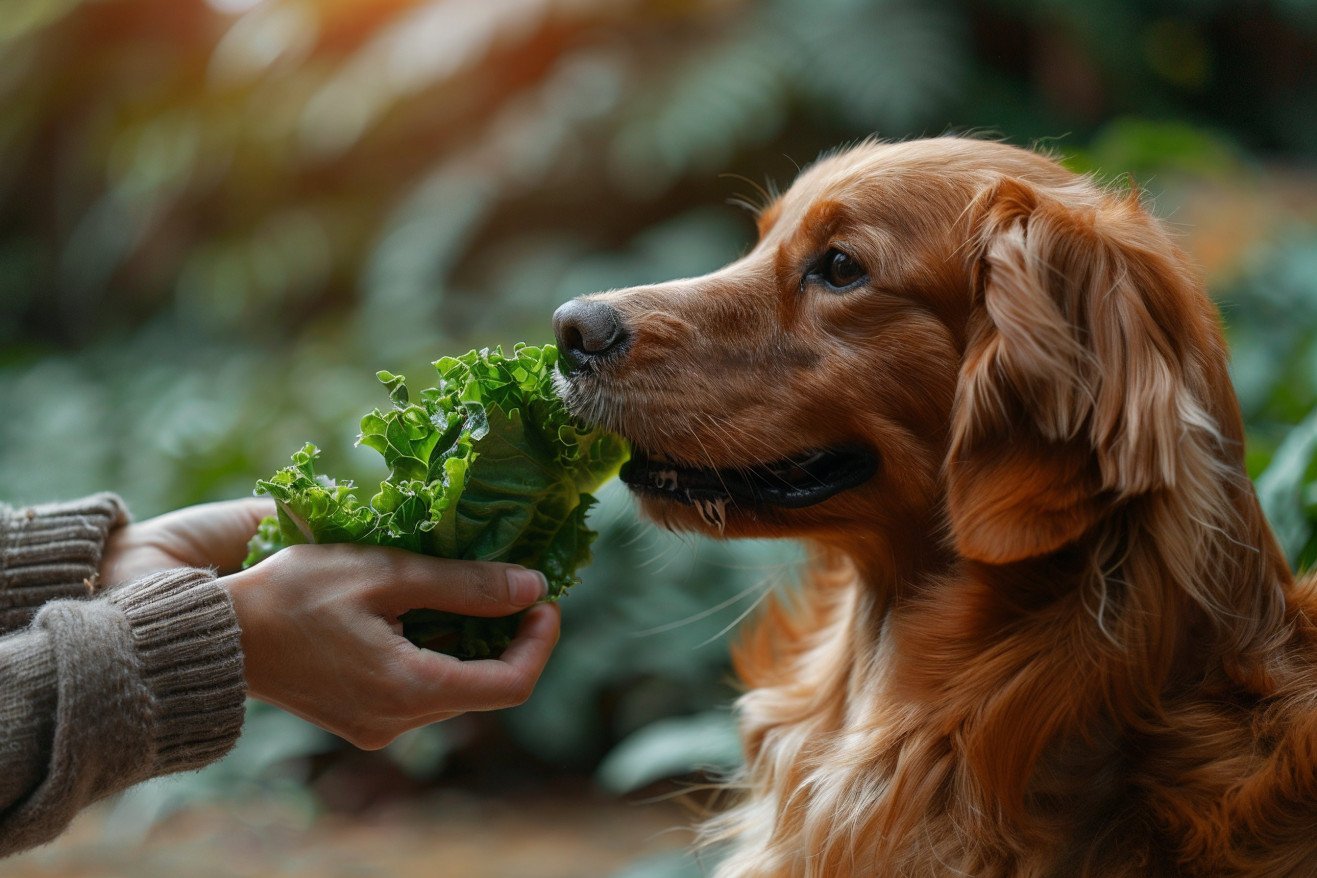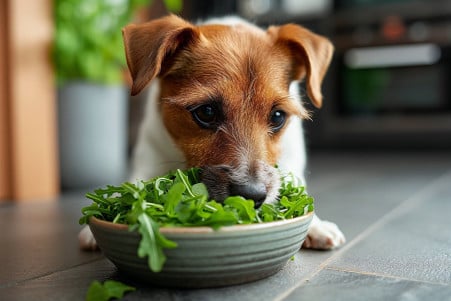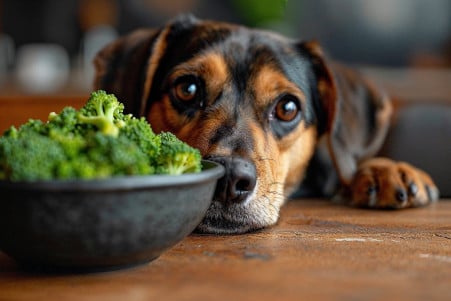Can Dogs Eat Lettuce? The Benefits and Risks of This Leafy Green
14 May 2024 • Updated 13 May 2024

If you’ve ever fed your dog a piece of lettuce from your salad, you may have wondered whether it’s a good treat for them. While lettuce is safe for dogs and can even offer some health benefits, it’s not particularly nutritious and should only be given to dogs in moderation.
Still, that hasn’t stopped many dog owners from feeding their pets this leafy green, whether as a way to give them a healthy snack or to help them stay cool in the summer. In this article, we’ll explore what veterinary nutritionists and other experts have to say about the advantages and disadvantages of feeding dogs lettuce. We’ll also cover the different kinds of lettuce, how much of it you should give your dog, and how you can prepare it to ensure it’s safe for them to eat.
Can dogs eat lettuce?
Nutritional Value of Lettuce for Dogs
While lettuce is low in calories, it does offer some important nutrients that can be good for our furry friends. Lettuce is a good source of vitamins A and K, which, per Rover.com, help with vision, liver function, blood clotting, and cell support in dogs. It also has fiber, which is good for digestion and weight control.
That said, the nutritional value is limited, so it should be considered a supplement and not a main part of a dog's diet. Darker lettuces like romaine and arugula tend to be more nutritious than lighter lettuces like iceberg. Even with these benefits, lettuce can't take the place of a well-balanced, complete dog food that's designed to meet all of a dog's nutritional requirements.
Potential Risks and Side Effects of Feeding Dogs Lettuce
While lettuce is safe for dogs, overconsumption can cause digestive problems, such as diarrhea or gas. Pumpkin® notes that the high fiber content in lettuce can be hard for dogs to break down, especially if they aren't used to eating leafy greens. There is also a risk of bacterial contamination, such as E. coli, Listeria, or Salmonella, if the lettuce isn't properly washed, which can lead to severe stomach upsets, according to the American Kennel Club.
In addition, some lettuces, like spinach and kale, contain oxalates that can interfere with calcium absorption and potentially lead to kidney or bladder stones, according to ManyPets. Dogs should never be given lettuce that's been dressed or seasoned, or that contains other ingredients that could be toxic to them.
How to Introduce and Feed Lettuce to Dogs
To introduce lettuce to your dog, you should do so gradually and in small portions. Daily Paws says this will help you watch for any negative side effects. TrustedHousesitters.com suggests chopping or lightly steaming the lettuce before giving it to your dog to help with digestion and to prevent choking. You should also avoid giving dogs lettuce that has been prepared with dressings, spices, or other ingredients that could be toxic.
Lettuce should be given to dogs as an occasional treat or supplement and should not be used as a substitute for a well-balanced dog food. NorthPoint Pets & Company recommends experimenting by mixing it in with regular meals or making veggie smoothies to help make lettuce more appealing to your dog. If you prepare it properly and feed it in moderation, lettuce can be a safe and healthy addition to your dog's diet.
Can Dogs Have Lettuce Leaves and Stems?
Both the leaves and stems of lettuce are safe for dogs to eat, as long as they are washed and prepared properly. Dogs Naturally notes that lettuce leaves should be cut or torn into smaller pieces to avoid choking and to help with digestion. Stems can be tougher and harder for dogs to chew and digest, so it's best to cut or avoid them when feeding.
Just like with the lettuce itself, it's important to feed dogs lettuce leaves and stems in moderation. Spot® warns against feeding dogs lettuce leaves or stems that are wilted, discolored, or otherwise compromised, as this can cause digestive upset or bacterial contamination.
Wrapping Up: Lettuce and Dogs, A Final Perspective
Lettuce can be a safe and healthy occasional treat for dogs when fed in moderation and as part of a balanced diet. Although it is not particularly nutritious, it does contain some vitamins, minerals, and fiber that can be good for dogs.
Romaine and other dark, leafy lettuces are more nutritious than iceberg lettuce. It is important to prepare lettuce properly, control portion sizes, and watch for any signs of negative reactions when feeding it to dogs. As with all new foods, it's important to talk to a vet before making any major changes to a dog's diet.


